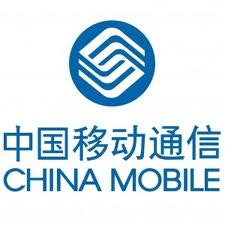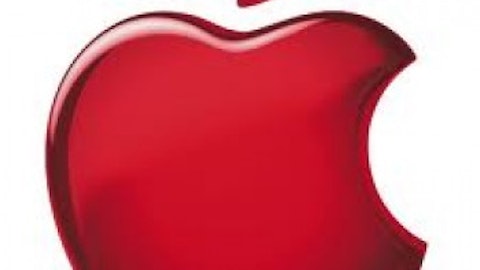Much has been made lately of the growth potential that the entry-level phone market represents. As the leader in the high-end smartphone arena, rumors surrounding Apple Inc. (NASDAQ:AAPL)‘s needs for a cheaper alternative to supplement its dominant share of the full-featured smartphone market are nothing new. I’ve suggested the same thing on more than one occasion. But a new report by research firm IDC detailing 2013 smartphone sales growth adds another wrinkle to the “iPhone Mini” debate.

For smartphone users, the notion of going back to a feature phone — you know, the “old days” — is borderline heresy. But for the majority of the billions of mobile-phone users around the world, old-school feature phones are the devices of choice. Either because unsubsidized smartphones cost too much for the majority of buyers, or because few emerging markets can boast the widespread, lightning-fast networks we’ve become accustomed to in the States, feature phones continue to dominate the global phone market — for now.
According to the IDC report, 2013 will be the year of the smartphone — the first year in which smartphones gain a slim 50.1% majority of the global mobile market. For Apple Inc. (NASDAQ:AAPL), and its brethren in the smartphone marketplace, that’s encouraging data, to say the least.
Much of Apple Inc. (NASDAQ:AAPL)’s nearly 20% drop in share price year to date has been attributed to concerns about continued growth, particularly overseas, where Apple Inc. (NASDAQ:AAPL) allegedly has nothing to offer customers but its expensive, high-end iPhones. Added competition, compressed margins, and uncertainties about developing the “next great thing” have also taken their toll on Apple Inc. (NASDAQ:AAPL)’s valuation. As for the low-end phone market, there’s no doubt it offers tremendous upside — a threefold increase in sales by 2016, according to research firm IHS.
As for the smartphone market in 2013, the IDC report confirms what many of us have long thought: China and India offer the most upside for mobile-phone manufacturers, including those in the surging high-end smartphone market.
Does this change the game for Apple?
It’s no accident that Apple Inc. (NASDAQ:AAPL) CEO Tim Cook has spent so much time in China of late. Cook recognizes that global growth isn’t just a good idea for Apple Inc. (NASDAQ:AAPL) — it’s a necessity. And as the IDC report confirms, China will remain a key market for all phone manufacturers for years to come. Cook’s conversations with China Mobile Ltd. (ADR) (NYSE:CHL) are probably an effort to secure a deal like the one Nokia Corporation (ADR) (NYSE:NOK) has: Offer China Mobile’s 700 million customers the latest, greatest smartphone — in Nokia’s case, the Lumia 920T — and subsidize the cost so that it’s virtually free with a service contract.
China Mobile Ltd. (ADR) (NYSE:CHL)’s one of the earliest major Chinese carriers to begin the transition to faster 4G networks, which also bodes well for high-end smartphone manufacturers.
With Apple Inc. (NASDAQ:AAPL)’s margins already under pressure, the expected boost in global high-end smartphone sales in 2013 (and beyond) may have some Apple fans wanting to ditch those oft-rumored plans for a cheap iPhone. But don’t let the IDC data sway you. Apple Inc. (NASDAQ:AAPL) still needs a low-end mobile solution.
Samsung leads the world in mobile-phone sales, having overtaken longtime leader Nokia. Though the companies are headquartered in different parts of the world, they share a common theme: Both offer a slew of mobile-phone alternatives in an effort to serve all markets and price points, rather than catering only to high-end users. Nokia wasted no time sharing that its Asha phone was voted the best low-end feature phone at the recently completed Mobile World Congress. Clearly, Nokia’s embraced emerging opportunities, just as world-leading Google Inc (NASDAQ:GOOG), with its nearly 70% worldwide Android OS market share, has.
You can bet that per-unit profits for Nokia’s Asha, Google’s Nexus, or any number of Samsung’s mobile offerings don’t even remotely compare with Apple Inc. (NASDAQ:AAPL)’s iPhone. But growing revenues, and, just as importantly, market share, are rarely a bad thing, even if they come at the expense of margins. As users continue switching from feature phones to smartphones in the coming years, selling existing customers on an upgrade is easier than encouraging them to jump ship from another provider.
Continued growth in high-end, global smartphone market share should hearten Apple Inc. (NASDAQ:AAPL) shareholders, even as the company’s stock hovers in the $430 range. Apple Inc. (NASDAQ:AAPL) does top-flight smartphones as well as, or better than, nearly anyone on the planet. As the majority of the billions of mobile-phone users make the switch from feature phones to smart devices, Apple Inc. (NASDAQ:AAPL) will benefit.
But less than half of 6 billion — the number of old-school feature-phone users not making the jump to high-end smartphones — is still a huge opportunity for phone manufacturers willing and able to serve them. And that’s something Samsung, Nokia, and OS leader Google fully appreciate. The IDC smartphone market share data is good news for Apple Inc. (NASDAQ:AAPL), but it doesn’t change the company’s need to expand its product line.
The article Does This Mean Apple Doesn’t Need a Low-End Phone? originally appeared on Fool.com and is written by Tim Brugger.
Fool contributor Tim Brugger has no position in any stocks mentioned. The Motley Fool recommends Apple and Google and owns shares of Apple, China Mobile, and Google.
Copyright © 1995 – 2013 The Motley Fool, LLC. All rights reserved. The Motley Fool has a disclosure policy.





